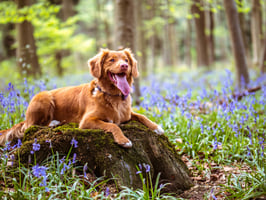Having an unruly dog that pulls on the leash when walking can be a nuisance and a potential safety...
Tips for Training Your Dog to Stop Chewing on the Leash
Training your dog to stop biting the leash is important to ensure their safety and the safety of those around them. The key is to keep the leash out of reach and to reward positive behaviour. This article will discuss the importance of training, the steps to take to get your dog to stop biting the leash, and tips to make the process easier.
The Importance of Training
Training your dog to not bite the leash is an important step in their overall training. Dogs that bite the leash can be difficult to control and may be a danger to themselves and those around them. Additionally, a dog that bites the leash can be difficult to take for a walk, as the leash will continually be in danger of being bitten.
It is important to start training your dog as soon as possible. The longer the behaviour continues, the harder it will be to train your dog to stop. Additionally, the longer the behaviour continues, the more dangerous it can become.
Steps to Take to Get Your Dog to Stop Biting the Leash
The first step in getting your dog to stop biting the leash is to keep the leash out of reach. This means that you should never leave the leash on the ground or within reach of your dog. Additionally, you should never let your dog chew on the leash, as this will only reinforce the behaviour.
The next step is to reward your dog for positive behaviour. Whenever your dog is not biting the leash, you should reward them with a treat or praise. This will help to reinforce the positive behaviour and will make it more likely that your dog will continue this behaviour in the future.
You should also try to distract your dog if they start to bite the leash. This can be done by giving them a toy to play with or by redirecting their attention to something else. This will help to break the habit and will help to keep them from continually biting the leash.
Finally, you should never scold or punish your dog for biting the leash. This will only make them more likely to bite the leash in the future and will not help to break the habit. Instead, you should focus on rewarding positive behaviour and redirecting their attention away from the leash.
Tips to Make the Process Easier
There are a few tips that can make the process of getting your dog to stop biting the leash easier. The first tip is to make sure that the leash is always out of reach. This will help to ensure that your dog does not have access to the leash and will be less likely to bite it.
The second tip is to reward your dog for positive behaviour. Whenever your dog is not biting the leash, you should reward them with a treat or praise. This will help to reinforce the positive behaviour and will make it more likely that your dog will continue this behaviour in the future.
The third tip is to keep your dog distracted. This can be done by giving them a toy to play with or by redirecting their attention to something else. This will help to break the habit and will help to keep them from continually biting the leash.
The fourth tip is to be consistent. Training your dog to stop biting the leash is a process and it will take time. You should be consistent in your training and make sure that you are rewarding positive behaviour and redirecting their attention away from the leash.
Finally, you should never scold or punish your dog for biting the leash. This will only make them more likely to bite the leash in the future and will not help to break the habit. Instead, you should focus on rewarding positive behaviour and redirecting their attention away from the leash.
Conclusion
Training your dog to not bite the leash is an important step in their overall training. It is important to start training your dog as soon as possible. The key is to keep the leash out of reach and to reward positive behaviour. Additionally, there are a few tips that can make the process of getting your dog to stop biting the leash easier. By following these steps, you can help to ensure that your dog is safe and that they learn the correct behaviour.



